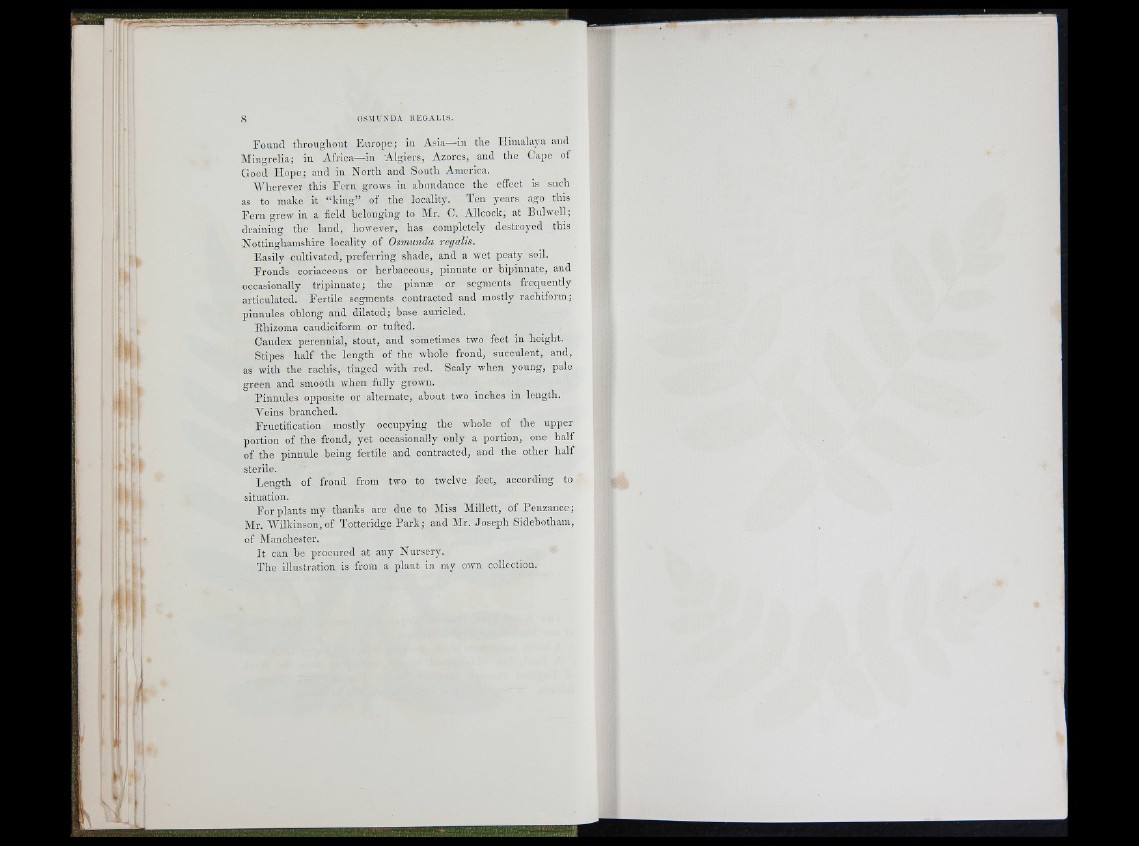
F o u n d tlirougliout E u t'o p e ; in Asia—in th e H imalaya and
Mingi-elia; in Africa—in Algiers, Azores, and the Cape of
Good H o p e ; and in N o r th and South America.
W h e re v e r this F e rn grows in abundance th e effect is such
as to make it “ k in g ” of th e locality. T en years ago this
F e rn grew in a field belonging to Mr. C. Allcock, at E u lw c ll;
d ra in in g th e lan d , however, has completely d estroyed this
Nottin g h am sh ire locality of Osmunda regalis.
Easily cu ltivated, p re fe rrin g shade, and a wet pe a ty sod.
F ro n d s coriaceous or herbaceous, p in n a te or b ip in n a te , and
occasionally trip in n a te ; the pinnm or segments freq u en tly
a rticulated. F e rtile segments contracted and mostly ra ch ifo n n ;
pin n u le s oblong and d ila ted ; base auricled.
Khizoma caudiciform or tufted.
C audex peren n ia l, stout, and sometimes two feet in he ig h t.
Stipes h a lf the le n g th of th e whole frond, suc culent, and,
as with th e rachis, tinged w ith red . Scaly when young, pale
gre en and smooth when fully grown.
P in n u le s opposite or alternate, about two inches in length.
Veins b ranched.
Fruc tification mostly occupying th e whole of th e u p p e r
p o rtio n of th e fro n d , y e t occasionally only a portion, one h a lf
of th e p in n u le be in g fertile and co ntracted, and the o ther h a lf
sterile.
L e n g th of fro n d from two to twelve feet, according to
situation.
F o r plants my thanks are due to Miss M ille tt, of P en z an c e ;
Mr. W ilk in so n , of T o tte rid g e P a rk ; and M r. Jo s ep h Sidebotham,
of Manchester.
I t can be p ro cu re d at any N u rs e ry .
T h e illu stra tio n is from a p lan t in my own collection.
!ii
t ,
"I